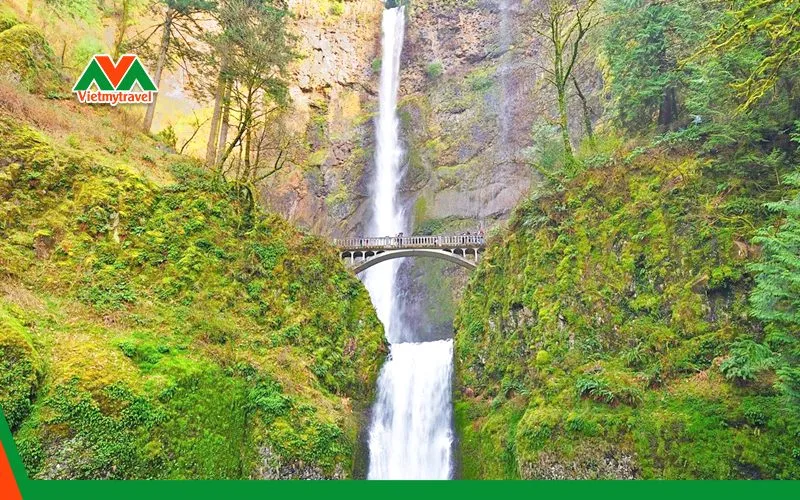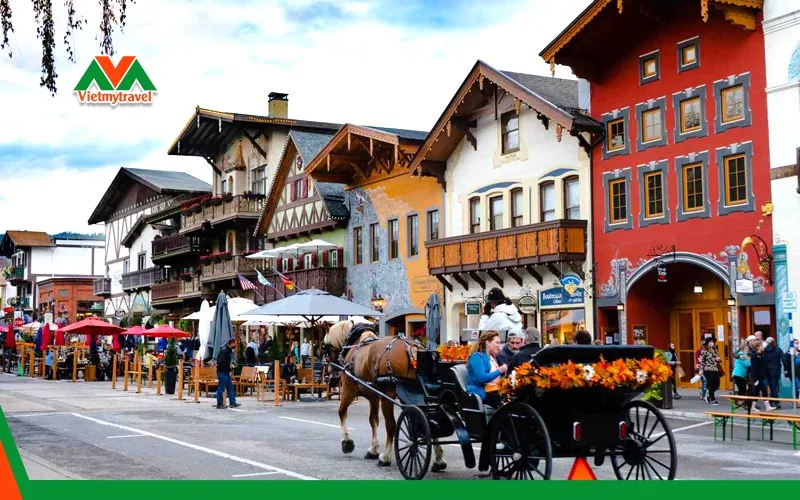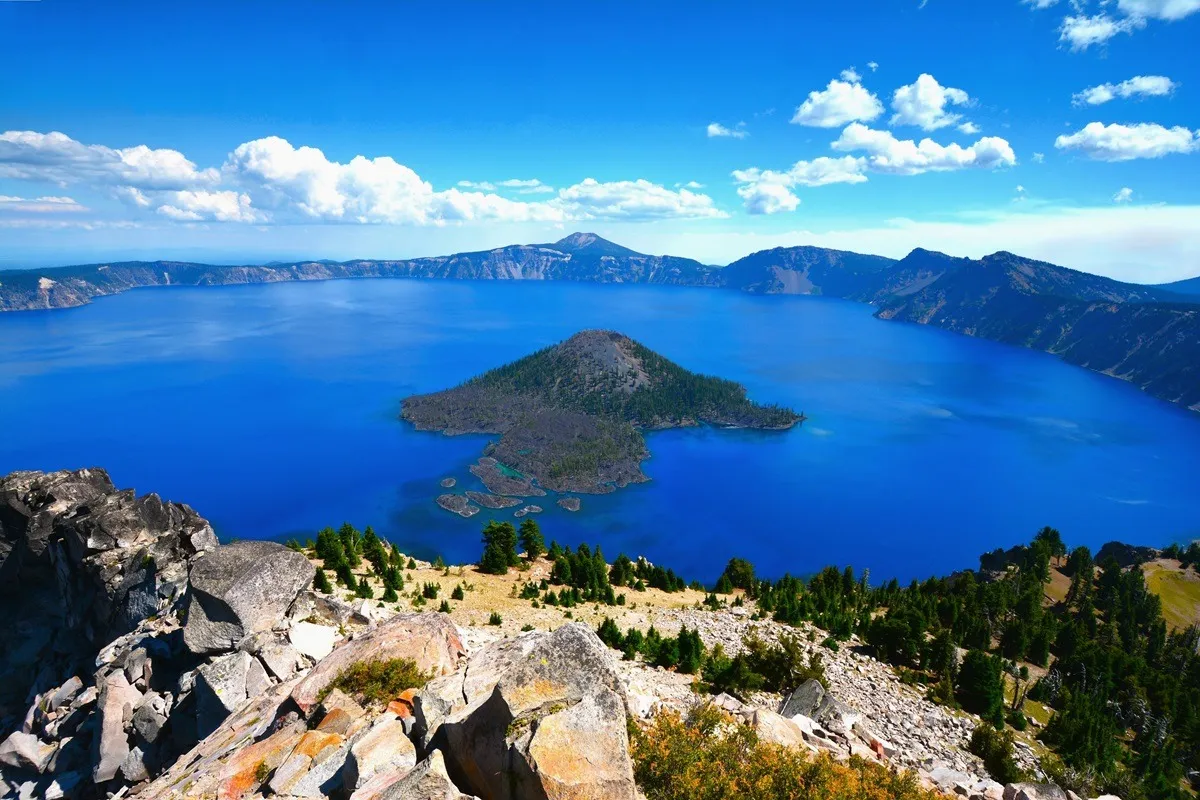Oregon, the Pacific Northwest state of the USA, is celebrated for its breathtaking and diverse natural beauty, ranging from rugged coastlines and lush forests to the majestic Cascade Mountains and high desert plateaus. It’s a true paradise for those who love exploration and backpacking adventures. If you’re dreaming of a free-spirited journey to discover Oregon in your own way, this article is your comprehensive guide, offering detailed and complete instructions for organizing a backpacking trip through Oregon. It will help you confidently hit the road and fully enjoy the beauty of this incredible state.
Why Oregon is the Ideal Backpacking Destination
Oregon holds a special allure for the backpacking community worldwide, and it’s easy to see why:
- Diverse and Pristine Nature: Oregon is a stunning blend of diverse ecosystems. You can begin your journey along the enchanting Pacific coast, with its mysterious black basalt cliffs and charming seaside towns. Next, explore the grandeur of the Cascade Mountains, featuring snow-capped peaks, crystal-clear lakes, and vast pine forests. Inland Oregon reveals the wild beauty of the high desert plateau, red rock canyons, and winding rivers. This diversity ensures that whether you love the ocean, mountains, or desert, Oregon can fully satisfy your passion for exploration.
- Abundance of Outdoor Activities: Blessed with natural gifts, Oregon is an ideal destination for outdoor activities. Hiking is one of the most popular, with thousands of miles of trails stretching across the state, from easy coastal paths to challenging mountain climbs. Camping is also an unmissable experience, allowing you to immerse yourself in nature and enjoy the fresh air. Additionally, you can partake in activities like kayaking, rock climbing, fishing, mountain biking, and skiing (in winter).
- Affordable Travel Costs: Compared to many other popular tourist destinations in the United States, Oregon offers relatively affordable travel costs, especially if you choose backpacking. Camping in designated areas significantly reduces accommodation expenses. Budget-friendly dining options at local eateries or self-catering also minimize food costs. Moreover, many natural attractions in Oregon are free or have very low entrance fees.
- Developed Tourist Infrastructure: Despite its unspoiled beauty, Oregon has a well-developed tourist infrastructure that caters to backpackers’ needs. Public transportation is quite convenient, especially in urban areas and along major routes. Campsites are equipped with basic amenities such as restrooms, water taps, and picnic tables. Tourist information is readily available through visitor centers and the state’s official website.
- Friendly and Hospitable Locals: Oregonians are known for their friendliness and openness. They are willing to help travelers and share valuable local travel tips. The “travel bug” culture is also prevalent in Oregon, so you’ll easily meet and befriend like-minded people, creating memorable moments on your journey.

Detailed Planning for Your Oregon Backpacking Trip
To ensure a smooth and memorable Oregon backpacking trip, detailed planning is crucial. Here are the factors you need to consider:
Ideal Time to Visit
The best times for backpacking in Oregon are summer (June to September) and autumn (September to November).
- Summer: The weather is warm and dry, perfect for outdoor activities like hiking, camping, and coastal exploration. However, this is also the peak tourist season, so attractions may be more crowded and service prices may be higher.
- Autumn: The weather is still pleasant, cool, and less rainy than spring. The vibrant fall colors create stunning scenery for hiking and nature exploration. Autumn is usually less crowded than summer, offering more tranquility and comfort.
Spring (March to May) and winter (December to February) can also be suitable times to visit Oregon, depending on your preferences and desired activities. Spring brings blooming wildflowers and powerful waterfalls after the winter snowmelt, but the weather can be unpredictable and rainy. Winter is ideal for skiing in the Cascade Mountains, but many other areas may be closed due to snowfall.
Suggested Itineraries
Here are a few suggested Oregon backpacking itineraries that you can customize to fit your time and interests:
-
7-Day Oregon Coast Exploration Itinerary:
- Days 1-2: Explore Astoria and Cannon Beach, hike in Ecola State Park.
- Days 3-4: Drive along Highway 101, visit Tillamook Creamery, explore Pacific City and Cape Lookout State Park.
- Days 5-6: Continue to Newport, visit the Oregon Coast Aquarium, explore Yaquina Head Outstanding Natural Area.
- Day 7: End your journey in Florence, explore the Oregon Dunes National Recreation Area before heading back to Portland or Eugene.
-
10-Day Cascade Mountains and Central Oregon Exploration Itinerary:
- Days 1-2: Portland, explore the city and prepare for your trip.
- Days 3-4: Columbia River Gorge, visit Multnomah Falls and other waterfalls, hike on trails.
- Days 5-6: Bend, explore the city, rock climb at Smith Rock State Park.
- Days 7-8: Crater Lake National Park, explore the stunning volcanic lake, hike and camp.
- Days 9-10: Newberry National Volcanic Monument, explore volcanic craters, lava caves, and lakes.
You can combine these itineraries or create a completely new one based on your favorite destinations and available time.
Transportation
- Rental Car: Renting a car is the most flexible way to explore Oregon, especially if you want to reach remote areas or travel between distant attractions. However, car rental and gas costs can be quite high.
- Bus: Buses are a more cost-effective option, especially for traveling between major cities and towns. Greyhound and Amtrak Thruway are two popular bus companies in Oregon. However, the bus network may not cover all tourist destinations, and travel times may be longer than driving.
- Walking/Cycling: For certain areas like cities or national parks, walking or cycling are excellent options for exploring and enjoying the scenery. Many cities in Oregon have developed bike lane systems.
- Hitchhiking: Hitchhiking is a common mode of transport in the backpacking community, but safety should be considered, and it should only be done in safe and populated areas.
Accommodation
- Camping: Camping is the most budget-friendly accommodation option and offers the closest experience to nature. Oregon has numerous public and private campgrounds, ranging from primitive campsites deep in the forest to well-equipped campsites near towns. Reservations are recommended, especially during peak season.
- Budget Hotels/Motels: Budget hotels and motels are suitable for those who want privacy and basic amenities. You can find many affordable options in smaller towns and cities.
- Hostels: Hostels are a popular choice among backpackers, providing a social atmosphere, shared experiences, and cost savings. Hostels typically offer dorm rooms and private rooms at reasonable prices.
- Airbnb: Airbnb offers a variety of accommodation options, from small studio apartments to cozy cabins, catering to different needs and budgets.
Budget Estimation
The budget for an Oregon backpacking trip depends on many factors, such as trip duration, transportation, accommodation type, dining, and activities. However, you can refer to the following estimated budget per person:
- Average Daily Cost: Approximately $50-100 USD (including accommodation, food, transportation, and basic activities).
- Accommodation Costs: Camping (free – $30/night), hostel ($25-40/night), budget hotel/motel ($50-80/night).
- Food Costs: Self-catering ($10-20/day), budget eateries ($20-40/day), restaurants ($40+/day).
- Transportation Costs: Car rental ($50-100/day), bus ($20-50/day), gas (depending on distance).
- Activity Costs: National park entrance fees (around $30/vehicle pass), other activities (depending on choices).
You can adjust your budget by choosing free or low-cost activities, self-catering, using public transportation, and opting for budget-friendly accommodation.

Unmissable Backpacking Experiences in Oregon
Oregon is a treasure trove of unique and memorable backpacking experiences. Here are some suggestions you shouldn’t miss:
Explore the Oregon Coast
The Oregon Coast stretches over 360 miles, featuring pristine beaches, dramatic cliffs, coastal forests, and charming small towns.
- Hike the Oregon Coast Trail: This famous long-distance trail spans the entire Oregon Coast, offering breathtaking scenery and exciting challenges.
- Watch the Sunset at Cannon Beach: Cannon Beach is famous for its majestic Haystack Rock, especially beautiful at sunset.
- Visit Yaquina Head Lighthouse: This historic lighthouse sits on a headland jutting into the sea, offering stunning views of the coast and ocean.
- Explore Coastal Towns: Visit charming coastal towns like Astoria, Seaside, Newport, and Bandon, enjoy fresh seafood, and explore local culture.
Explore the Cascade Mountains
The Cascade Mountains run along the length of Oregon, featuring volcanic peaks, glacial lakes, pine forests, and majestic waterfalls.
- Crater Lake National Park: Crater Lake is one of the deepest and clearest lakes in the world, formed in a collapsed volcano crater.
- Climb Mount Hood: Mount Hood is Oregon’s highest peak, attracting climbers and skiers from around the world.
- Hike in Willamette National Forest: Willamette National Forest is a vast old-growth forest with ancient trees, waterfalls, and stunning lakes.
- Visit Multnomah Falls: Multnomah Falls is Oregon’s tallest waterfall, located in the Columbia River Gorge, a must-visit destination.
Explore Central Oregon
Central Oregon is a land of high desert plateaus, red rock canyons, the Deschutes River, and cowboy towns.
- Smith Rock State Park: Smith Rock is a world-renowned rock climbing destination with towering basalt cliffs and diverse climbing routes.
- Bend City: Bend is a vibrant city located on the Deschutes River, known for outdoor activities, craft breweries, and distinctive cuisine.
- Newberry National Volcanic Monument: Newberry is a large volcanic area with craters, lava caves, lakes, and hot springs.
- Deschutes River: The Deschutes River is an ideal destination for kayaking, fishing, and hiking.
Explore the Columbia River Gorge
The Columbia River Gorge is a stunning canyon created by the Columbia River, dividing Oregon and Washington.
- Drive the Historic Columbia River Highway: The Historic Columbia River Highway is a beautiful scenic drive that winds through the gorge, with numerous viewpoints and waterfalls.
- Visit Vista House at Crown Point: Vista House is a historic architectural landmark perched atop Crown Point, offering panoramic views of the Columbia River Gorge.
- Explore Waterfalls: The Columbia River Gorge is famous for dozens of waterfalls, large and small, such as Multnomah Falls, Bridal Veil Falls, and Latourell Falls.
- Hike to Dog Mountain: Dog Mountain is a popular hike known for its wildflower blooms in spring and stunning views of the Columbia River Gorge.

Useful Tips and Advice for Backpacking Oregon
- Pack Appropriately: Bring comfortable clothing and footwear suitable for the weather and activities you plan to do. Don’t forget a waterproof jacket, sunscreen, hat, sunglasses, and personal medications. If you plan to camp, pack a tent, sleeping bag, cooking stove, and other necessary gear.
- Research Your Destinations: Research information about the destinations you want to visit, including opening hours, entrance fees, available activities, and regulations to follow.
- Make Reservations (if needed): Reserve campsites, hostels, or popular tours in advance, especially during peak season.
- Carry a Map and GPS: Even if you use a smartphone, always carry a paper map and backup GPS, especially when hiking in remote areas.
- Prioritize Safety: Always inform family or friends about your itinerary and expected return time. Hike in groups and follow safety signs. Be aware of wildlife and unpredictable weather.
- Respect Nature: Adhere to the “Leave No Trace” principles, do not litter, avoid making noise, and do not harm the natural environment.
- Connect with the Backpacking Community: Join online backpacking groups or meet other travelers at hostels or campsites to share experiences and find travel buddies.
- Enjoy Local Cuisine: Try Oregon’s specialties such as fresh seafood, craft beers, wines, and local agricultural products.
Conclusion
Backpacking Oregon is an exciting and memorable journey of discovery. With its diverse nature, abundance of outdoor activities, and affordable costs, Oregon is an ideal destination for those who love freedom, adventure, and want to experience new things. Hopefully, with these detailed instructions for organizing a backpacking trip through Oregon, you will confidently plan and embark on an amazing trip, fully exploring the beauty of this Pacific Northwest state. Are you ready for your Oregon backpacking adventure?